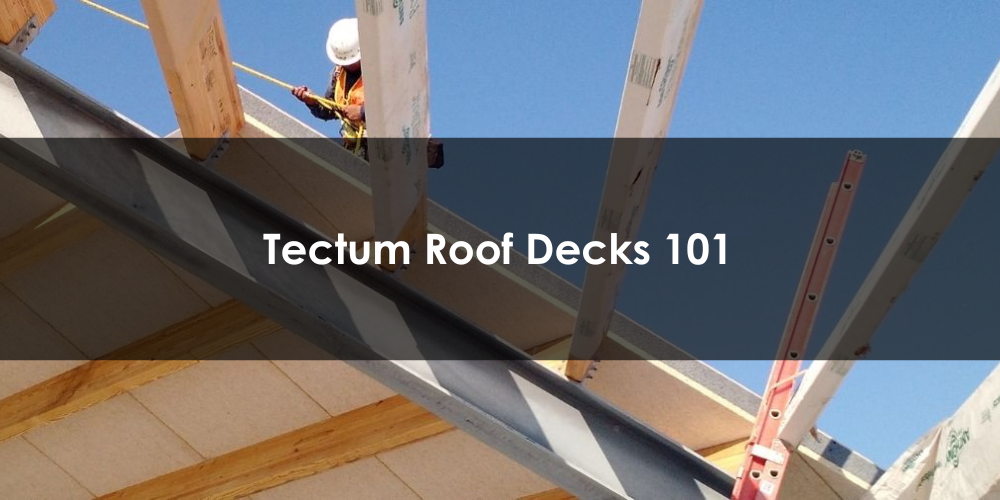
New construction projects require excellent thermal and acoustical controls–especially for applications such as gymnasiums or restaurants. If your project also requires an open plenum (exposed structure to the roof deck), standard metal decking may not be the right choice. Tectum Roof Decks were created to fill this need.
Providing excellent safety, sound and structural properties, Tectum roof decks have been the gold standard in roof decking products for over 75 years. In this comprehensive buyer’s guide, our experts answer common questions about the types of Tectum, the advantages of Tectum deck systems, and how to select the right roof deck contractor for your project.
What are Tectum roof decks?
Tectum roof deck panels are made of aspen wood fibers and a magnesium oxy-sulfate binder that create a durable and environmentally friendly roof deck. The fibers are taken from perpetually growing trees, making Tectum deck FSC-certified. Their unique manufacturing processes allow Tectum roof decks to provide a consistent visual appearance and trusted structural and acoustical properties.
Standard Tectum tile roof deck panels are used as the substrate for LWIC or ISO board systems, and require a roof over the entire assembly. Composite Tectum roof deck panels only require the roof membrane to create a complete system, much like an SIP panel.
What are the different types of Tectum?
Choose between a wide array of Tectum panels based on the thermal, acoustical, and structural requirements of your building.
- Tectum I: Commonly used in low-slope applications, and available in either plank or tile configurations
- Tectum Composite Panels: Commonly used in sloped applications, and provide excellent acoustics, insulation, and structural integrity. There are several types of Tectum composite panels, including:
- Tectum E-N
- Tectum E
- Tectum III, IIIP, and IIIW
- Tectum V Span
What are the advantages of Tectum roof deck systems?
Acoustical insulation
Tectum absorbs sound, allowing Tectum roof decks to help with speech intelligibility within a space. Often used in large open structures like gymnasium, Tectum panels provide high NRC ratings (up to 0.80) that aid in comfort and acoustical control.
Tectum also meets the American National Standards Institute standard for acoustical treatment (ANSI/ASA S12.60), which applies to any space that could be used for teaching.
R-value
Standard 3” Tectum roof deck has an R-value of 6.43 by itself. ISO insulation or LWIC systems provide further insulation. Tectum composite panels can achieve any insulation value needed for local code requirements, up to R-43.76.
Sustainability
Tectum roof deck panels meet key industry sustainability requirements, including EPD, HPD, and Declare.
What roofing materials work best with Tectum panels?
Tectum is compatible with most roofing materials. It is often used as a substrate for lightweight insulating concrete (LWIC) roof deck systems. Since Tectum is porous, the LWIC can dry from the underside of the slurry, resulting in a structural and acoustical roof deck with built-in insulation.
How to choose a Tectum roof deck installer
When finding a roof deck contractor for your building, consider the following questions:
- How long have they been installing Tectum Roof Decks? Can they list a few significant projects?
- What is the material lead time and could they work with the stated construction schedule?
- Will the contractor provide detailed layout drawings and submittals for approval that indicate Tectum standards?
- Does the contractor have the training in Tectum installation and safety needed for the project?
Want to learn more?
Nettles Construction Solutions has been installing Tectum roof decks for over 45 years. We can help with your project or answer any questions. Contact us today!




